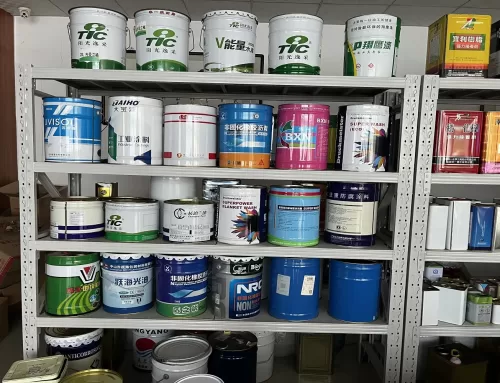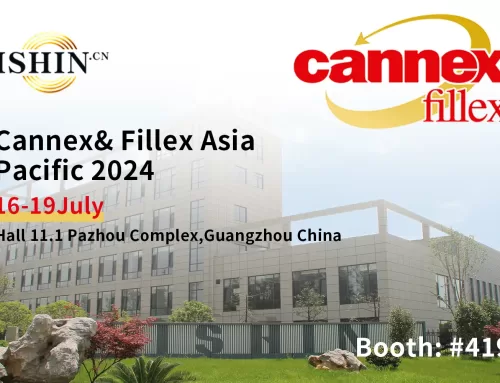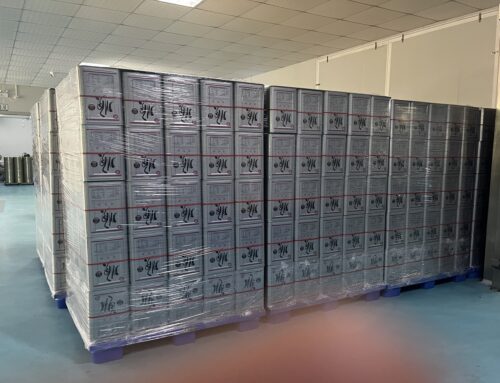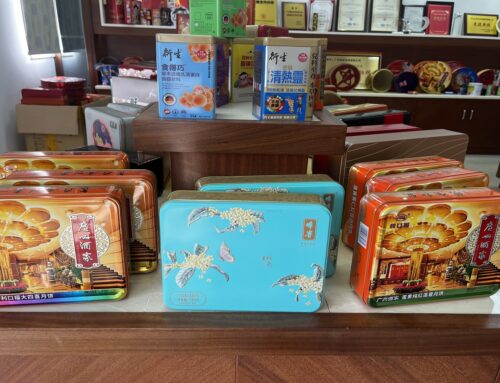For most industrial products, food and beverage brands, when the market undergoes great changes and product sales decline, brand owners will launch new products or replace product packaging to promote product sales and seize market share.
Since the beginning of 2020, affected by the new crown epidemic, all walks of life have faced some new challenges. In the communication with the upstream and downstream partners of the packaging supply chain, the author found that the frequency of revision of some brands this year is indeed higher than before the epidemic, and the demand for proofing received by printing and packaging companies is also higher than in previous years. In the past, compared with the total printing price, the cost of making the packaging model was negligible, but it always took up the production time of the printing machine. Obviously, this was a waste for the printing machine, and the printing company had to do it. Now, with the increase in the frequency of packaging revisions and the reduction in the number of prints each time compared to before the epidemic, this part of the expenditure has changed from negligible to slightly heavy for printing and packaging companies.
With the continuous development of digital inkjet technology and color management technology, the production of most physical models of packaging can be realized by using digital inkjet system at present, which can be used in white cardboard, gray cardboard, gold and silver cardboard, tinplate, aluminum plate, Film, shrink film, transparent film, silver foil, aluminum foil and many other materials to reproduce the effect of actual printing, and can also be used with digital bronzing, digital varnish for post-print finishing.
Although the digital packaging physical proofing system cannot 100% replace on-machine proofing, it can greatly reduce the frequency of on-machine proofing, and reduce the cost of a single proofing from several thousand yuan to several hundred yuan or even tens of yuan. The time is also shortened from 2-7 weeks to 60-120 minutes or even shorter, and it can also help printing companies to improve the utilization rate of printing presses.
The metal printing industry usually requires proofing before mass printing production. Taking tinplate printing as an example, traditional proofing was mostly used in the past, and now some companies have begun to use inkjet digital proofing method. Traditional proofing includes proofing directly on the printing press, and proofing with a monochrome proofing machine parallel to the printing. Inkjet digital proofing is divided into “water-based ink jet + paper” ink jet proofing, “UV ink jet + metal plate” ink jet proofing and “solvent ink jet + transfer film/shrinkage” according to the difference of ink and substrate Film” inkjet proofing three types. The advantages and disadvantages of each proofing method are analyzed below based on practical application experience.
traditional proofing
Press Proofing Press proofing is undoubtedly the best method, and has been used for a long time, if you want to print in high volume with the exact same proof, because the four-color and spot color effects can be accurately rendered directly on the final printed material. However, because this method must accommodate the production plan, coupled with the time-consuming processes of RIP, plate making, and arranging the machine, the proofing cycle is relatively long, and the customer needs to wait for a long time. In addition, on-machine proofing will also consume costs such as plate making, consumables, water, electricity, and labor. The comprehensive cost ranks first among all proofing methods. Therefore, it is necessary to comprehensively evaluate the risks to the business due to the long cycle and the cost of production rescheduling. Taking paper printing “5+1” (that is, white background + CMYK + varnish) as an example, in the case of using folio white cardboard with gray background and the proofing time of 2 hours, the cost of one-time proofing on the machine is about 2030 yuan ( See Table 1). Obviously, the cost of one-time machine proofing for metal printing is higher.
Single-color proofing machine proofing This method is closer to the four-color and spot-color effect of printing machine proofing, and does not affect printing production, so it has long been a conventional proofing method in many iron printing plants.
There are two disadvantages. On the one hand, although the same ink used for printing is used, the color sequence, dot enlargement, drying process, etc. may be different from those of the printing machine, so the operator is required to have a certain experience, that is, to make artificial compensation during proofing so that the Chase. On the other hand, due to the need for plate making and the need to wash the machine and change the ink for each color proofing, the efficiency is not satisfactory.
From the perspective of the development history of digital proofing in the field of commercial printing, the use of digital proofing in the iron and steel industry is the general trend. Under the premise of stable and standardized printing process, documents can be directly proofed on inkjet printers without plate making, which has significant efficiency and cost advantages over traditional proofing.
Generally speaking, there are three types of digital proofing.
“Water-based ink inkjet + paper” digital proofing Early digital proofing used water-based ink and special paper for digital proofing with inkjet printers. Proofing with paper only restores the color, but cannot restore the material, let alone forming after proofing, so it is difficult to meet the needs of customers in the iron printing industry to see the real sample.
“UV ink inkjet + metal plate” digital proofing In order to be able to directly digital proofing on the metal plate, some users choose UV inkjet printers. However, because the current UV inkjet equipment on the market only has four colors of CMYK, it can only reproduce 50%~60% of the Pantone spot colors. Color can only be unsatisfactory. In addition, after the UV ink is cured on the metal sheet, it has a sense of tactile and visual unevenness, which is quite different from the actual printing ink effect.
Eco-solvent inkjet digital proofing The design of a metal package from concept to finished product often involves many changes or fine-tuning, and each change requires proofing to see the effect. As far as the above two digital proofing methods are concerned, if you choose to print proofing on paper by inkjet, you will not be able to present the look and feel of the final product, let alone judge the effect of packaging design or its marketing capabilities. Although UV inkjet proofing has achieved a breakthrough from digital paper samples to metal samples, it is still difficult to overcome the obstacle of “accurately simulate four colors and spot colors visually, and the hand feel is also consistent with printing inks”.
Nowadays, many packaging prototypes (dummy/prototype) in the European, American and Chinese markets have achieved high-fidelity packaging simulation through eco-solvent inkjet digital proofing technology. Taking China as an example, this technology is not only used in large metal printing enterprises, but also in packaging and printing enterprises such as cosmetic packaging, tobacco packaging, and electronic product packaging. It is currently a mature packaging digital proofing method in the market. CGS ORIS’s FPW packaging physical proofing solution is one of the mainstream solutions.
FPW packaging physical proofing: digital proofing method based on eco-solvent inkjet ink technology
Through systematic color management, color matching between digital proofing and actual printing can be achieved, provided that the working state of the printing press is relatively stable (pressure equalization, parameter standard), stable ink, and stable iron surface treatment.
Take the printing machine as the color target, connect X-Rite or Konica Minolta and other measuring equipment via CGS ORIS FlexPack digital proofing software (FPW) to collect the color table data on the printing color target, obtain the color characteristics of the printing machine, and drive the inkjet printer through FPW Go for color. Regardless of two-color or multi-color printing presses, UV or non-UV inks, coated iron or even film/gold and silver cards, the actual printing effect can be accurately reproduced on the actual printing material or printing-like material. Since FPW digital proofing is based on the information collection of the printing machine, and uses inkjet ink to accurately simulate the printing color effect of the ink of the printing machine, the color tracking during production is not a problem. In short, FPW is like a shadow printing machine in the prepress department, and its advantageous functions are reflected in the following aspects.
Wide color gamut printing system FPW packaging physical proofing can use Roland VS series printers, the configured ORIS XG eight-color eco-friendly eco-solvent ink (CMYK + orange + green + white + silver) has a large color gamut, and the hue of CMYK ink is also has been redefined. As a result, the color gamut of “CMYK+Orange+Green” is large enough to simulate nearly 95% of Pantone spot colors (below dE2.5), making files containing four colors and multiple spot colors no longer a problem.
In addition, FPW packaging physical proofing can also use Epson SC S80680 inkjet printer, which is equipped with ten-color ink (CMYK+LC, LM, LY, LK+Orange+Red+White or Silver), which can cover more than 90% of Pantone spot colors .
Convenient material restoration The fourth-generation ORIS FPW special transfer film is very thin, soft and transparent, which is the key to easy metal plate proofing. Proofing with transfer film involves two steps: first, print the graphics and text on the transfer film; and then use the laminating machine to coat the transfer film on the iron sheet. Because the ink is sandwiched between the transfer film and the iron sheet, and the film itself is very bright, the final feel and visual effect are the same as those of printing. And because the transfer does not require high temperature and is suitable for almost all packaging materials, it can be used to make prototypes that are almost the same as the real/large goods.
Metal printing companies with coating equipment can also apply digital proofing after coating the actual printed materials.
In addition to transfer film, CGS also offers heat shrink film suitable for proofing cylindrical containers such as two-piece aluminum cans, plastic beverage bottles, hoses, etc. Taking two aluminum cans as an example, first print the graphics and text on the heat-shrinkable film, roll it into a roll, and then use hot air/hot water/steam to shrink the heat-shrinkable film on the body of the can, so that you can get a printing effect with the same effect. Two-piece can proofing, the feel and visual effect are consistent with the printing.
FPW spot color matrix correction module This module takes the best data as the starting point, and can automatically generate similar color patches of different tones in six directions. Since the changes of spot colors are almost all among them, it can be printed out for customers to visually select , instead of having to go back and forth several times to pick a satisfactory spot color, the process is now simple and straightforward. This method combines visual convenience and data objectivity, eliminating the time and money wasted by customers in the back and forth in spot color adjustment.
After finishing option FPW packaging physical proofing can not only help customers realize the digitalization of proofing, but also have a complete printing effect simulation solution, such as reverse varnish, partial varnish, embossing, texture effect, etc., which can be cooperated with FPW software Roland LEF300 UV inkjet printer simulates on the digital sample of printed graphics.
Apply CxF technology to accurately restore the effect of spot color
Metal packaging often uses spot colors, especially brand logos, brand-specific colors, etc. Due to the particularity of the material in metal printing, the control of spot color printing is more complicated than that of general paper printing. In the traditional workflow, the creation and use of spot color data is single linear – from front to back, the same spot color may be created and transferred multiple times by different departments or different people, resulting in a certain uncertainty Sexuality and waste of resources, people, and time. In addition, because the provided spot colors are often only Lab values or Pantone color numbers, there is very little data or information, resulting in a lot of time and cost for packaging and printing companies to deploy spot colors.
In order to solve the problem of spot color transfer, ISO International Committee for Standardization has developed a new color data exchange format CxF/X-4. Lab values traditionally used are data read under specific light source conditions, while CxF/X-4 are reflectance values over the full spectrum range, and CxF/X-4 also stores more information along with color data, such as Brand name, printing method, printing material, verification measurement conditions, post-process, etc. are based on complete data information to ensure accurate restoration during proofing and printing.
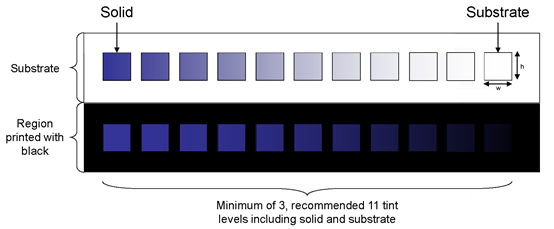
Using CGS’ CxF Toolbox software tool, it can help companies create their own spot color database. These spot colors can start from the actual inks used in production, and create CxF/X-4 data for base inks and commonly used spot colors. At the same time, CxF Toolbox can also export ASE files to prepress design software, so that CxF/X-4 data of brand spot colors can be used in design. In addition, CxF/X-4 data embedded in PDF files can also be directly applied during proofing. Finally, in mass production, the CxF/X-4 data of the spot color can be directly called in the spot color ink matching system as the target value to generate the ink formula, so that one creation can be used in the entire process from the designer to the printing workshop. Spot color data is shared, and CxF technology can be used to control and verify the consistency of spot colors throughout the supply chain.
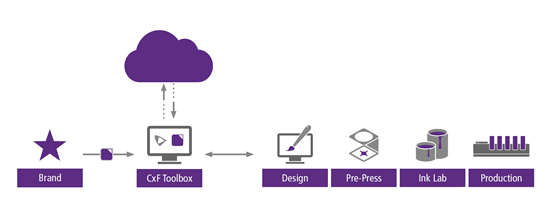
Spot color ink formulation software When customers choose a spot color, in order to achieve seamless connection with mass printing, they need to choose spot color ink formulation software from manufacturers such as X-Rite and datacolor. The operation method is: first measure the color of the metal plate (substrate) itself, then input the spot color data (Pantone number, Lab value, etc.) or directly measure the spot color sampling on the sample, and then automatically calculate the formula through the software, and finally the ink room Compare with deployment.
Under normal circumstances, the software will calculate multiple formulas for the target color, and then calculate the metamerism performance of each formula under 3 different light sources, and then select the most suitable solution for the packaging application field.
Epilogue
To sum up, on-machine proofing is the closest proofing method to the effect of bulk goods, but its application is limited by the following two factors. One is the slow release of printing press capacity. At present, in order to promote product sales, brand owners constantly update product packaging design or introduce seasonal packaging design, and the product listing cycle is required to be as short as possible, so the demand for proofing received by printing companies is increasing; A lot of jobs need to be proofed on the machine multiple times, which leads to the printing companies always disrupting the production rhythm due to accommodating proofing, and facing huge delivery pressure. On-machine proofing takes up a lot of time on the printing machine, and some printing companies even set aside a printing equipment for proofing, even so, it cannot meet the increasing demand for on-machine proofing.
Second, the cost of on-machine proofing remains high. As the costs of raw materials and labor are increasing year by year, the annual cost of printing on machine proofing (including plate making, ink, metal materials, labor, water, electricity, printing equipment depreciation, etc.) has risen to several million or even tens of millions. Put a lot of pressure on the business.
Therefore, if on-machine proofing can be reduced by 50%, it can not only release 50% of the printing press capacity occupied by proofing, but also save more than one million yuan in proofing costs. With the development of digital inkjet technology and color management technology, the current FPW packaging physical proofing scheme has been able to restore the actual printing effect (material, four colors, spot colors, special effects, etc.). The digital proofing system is parallel to the workshop, similar to a shadow printing machine, which can reduce part of the on-machine proofing, highly release the production capacity of the printing machine, save a lot of costs for enterprises and improve work efficiency. It should be noted that the initial sample/sample can be presented by digital proofing. At present, the FPW packaging digital proofing system has been successfully applied in the fields of metal packaging, cosmetic packaging, electronic product packaging, flexible packaging, food and beverage packaging, and tobacco packaging.
Metal digital proofing and spot color automatic color matching system are recognized as one of the development trends of metal printing technology. Leading metal printing companies in China have taken the lead in adopting the FPW packaging physical proofing scheme, which significantly reduces the time pressure and high cost of on-machine proofing. At present, both terminal printing and packaging companies, front-end professional design service companies, and professional pre-press companies are already using digital inkjet proofing. Therefore, the requirements of brands for the timeliness of proofing will become shorter and shorter, and the requirements for the product launch cycle will be more stringent. In order to better serve brand customers, it is very necessary for printing and packaging enterprises to be equipped with a professional digital inkjet proofing system to shorten the proofing time, reduce the cost of proofing, and then improve the market competitiveness of enterprises and enhance customer stickiness.

